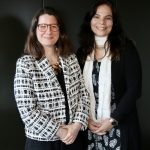Isaltino Morais – the visionary who turned Oeiras into a European case study
Isaltino Morais, the Mayor of Oeiras, is a charismatic man, whose larger-than-life presence seems to fill the room, a room dominated by an enormous painting of the Portuguese statesman Sebastião José de Carvalho e Melo, the Marquis of Pombal who redesigned and rebuilt the capital Lisbon after a devastating earthquake in 1755.
In some ways, the man whose office he now occupies in part of the marquis’ stately 18 th century Baroque palace in the old part of town, is not unlike him. He is a visionary and has a vision for the borough.
Every part of Oeiras has been thought out and planned to take advantage of the past and integrate it with the best of the present to create the wealthy, modern and dynamic municipality of the future that can compete in terms of learning, skills, sophistication and cutting-edge technology with any similar science, technology and business ecosystem in Europe.
The Oeiras Valley project’s genesis came about after the mayor and his team visited selective technology hubs in the United States, namely Silicon Valley, and came to the conclusion that the municipality of Oeiras had all the right ingredients to become the Silicon Valley of Portugal thanks to its scientific research and development institutions, high-tech companies and a concentration of some of the most highly qualified professionals in the country.
“We want to turn Oeiras into the Silicon Valley of Portugal, and this Oeiras Valley programme represents the distillation of our vision for a municipality that is modern, intelligent, developed, international and inclusive,” Morais says.
“We had a marketing company come in and develop a branded concept, which is ‘Oeiras Valley’, and which foresaw the creation of a unique ecosystem for business, science and technology in Portugal,” the mayor explains.
“What was interesting was that when compared to the other council logos we already had in the municipality, the Oeiras Valley logo was most widely recognised and fixed in people’s minds,” Morais adds.
To that end — and the mayor admits that the municipality is “flush with cash” — he and his team earmarked around €400 million to be invested in the project over a six-year period, to 2026.
The aim, he says, is to attract innovative companies in key areas such as technology, pharmaceuticals, nanotechnology, and biochemical and medical research, as well as developing a plan to attract engineers to the borough.
A case study
“Oeiras has a position in terms of business turnover which is unique in Portugal. In this 46 km2 — which is much smaller than many other municipal districts in Portugal – we have the largest concentration of technology entities in the country, and this makes Oeiras a case study in this area,” the mayor says.
All in all, delivering the Oeiras Valley concept is a tall and ambitious order, but promises to place Oeiras increasingly more on the Portuguese map as a showcase of the best in cutting-edge science and technology areas by attracting more investment to the borough, and put “Oeiras on the international map for innovation and business”.
Looking at the various Oeiras Valley outdoor placards posted in strategic positions around the borough, one might be forgiven for thinking this a recent phenomenon. In fact, as Isaltino Morais points out, It has been in the pipeline for years.
“This has been extremely well planned out and we are achieving our goals. Of course, the brand concept is important, and studies show that out of all the brand visibility in the area, the Oeiras Valley brand is the most recognised,” says Morais.
“The planning, particularly the land-use planning, and our policy of attracting added value high-tech companies, has been a 30-year strategy at a time when Lisbon was run-down, and well before the boom in tourism which the capital has experienced over the past four years, and which Oeiras naturally benefitted from too,” the mayor continues.
However, the Oeiras mayor is quick to stress that tourism is not its focus despite the many thousands of tourists who may have stopped off in the borough on their way to Sintra or back from an afternoon on one of the many beaches at Carcavelos, Estoril and Cascais and who also brought spending power to the many shops and restaurants in the municipality.
“What we’ve got to offer is quality: quality of environment, and a modern and vibrant municipality so that companies, particularly multinationals linked to technology, have all the services and infrastructure that they need. We’re preparing the municipality, and we’re concentrating our investment in these office park hubs like Taguspark, Lagoas Park, Quinta da Fonte and Arquiparque,” Morais explains.
Business and technology parks
In fact, Oeiras will, in many ways, already be capitalising on what it now has. It has already been a pioneer for business and technology parks in Portugal for over 20 years, with three ultra-modern and infrastructure rich parks – Taguspark, Quinta da Fonte and Lagoas Park.
“We helped develop those parks in the 1990s, and they have been very successful, and it was really in this last term that we were able to move forward with the brand and the vision for the area with all its scientific institutions. A new educational model will be aligned with the different universities, scientific institutions and companies,” saysMorais.
But Morais wants to build on this success and take his vision forward to turn Oeiras into the “Number One municipality in Portugal in the sciences” and leverage its role in terms of export companies.
To achieve this, Oeiras Valley programme goal, the mayor is focusing on economic and social development policies and improving mobility which, apart from the superb motorway that links the town and its business parks to Lisbon and the airport, is still hampered by recognised problems in the transport area.
“The great leap we made in Oeiras was over 30 years, the problem for this country and why it lags behind others is that few districts have made the quantitative leap that we’ve achieved in Oeiras.
“In the 1980s, Oeiras was essentially a Lisbon dormitory outer suburb, with most of the people living in the municipality going to work in Lisbon. There is a surplus relative to Lisbon of around 5,000 people (45,000 people who come from Lisbon to Oeiras-51,000 that go from Oeiras to Lisbon), but on the other hand, we have a surplus in terms of all of the other municipalities in the Greater Lisbon Metropolitan Area – Sintra, Amadora, Cascais, Almada and Vila Franca de Xira – in terms of commuters that come to work in Oeiras from these boroughs. This means that today Oeiras is the municipality that receives most commuters and has therefore become a new central hub in terms of work for the Greater Lisbon Municipal Area,” explains the Oeiras mayor.
In other words, an astonishing 130,000 people come to work in Oeiras each day from other Lisbon municipal boroughs.
This has been possible, Morais points out, because Oeiras had a strategic vision 30 years ago to turn the municipality into a business and tech park hub. Rather than try and compete as an industrial, tourist or even cultural centre, Oeiras went for the white-collar service and technology-based companies.
What the Council did was plan the territory with organised detailed urban plans precisely to house this type of companies, while paying attention to that environmental quality that Lisbon would not be able to provide.
The problem now, says the mayor, because of the popularity of the strategy, with companies that have 2-3,000 employees, is finding the space to house the new companies that want to set up in the borough.
Taguspark – a flagship office park
Morais points out that the creation of Taguspark as a flagship office hub in Greater Lisbon broke new ground for Portugal. The park attracted large multinationals like Cisco (and Microsoft at the time), in technology, big pharmaceutical companies like Novartis, educational research institutes like the Instituto Superior Técnico (IST), Atlantic University and international schools such as the International Sharing School, all of which gradually created an image that it is a world-class science and technology park.
And since birds of a feather flock together, these companies have concentrated together. “Prestigious companies want to be next to other prestigious companies, whatever their sector of operation, and the strategy has been a success because of effective territorial planning,” says Morais.
Clearing the shanty towns
Oeiras had rundown neighbourhoods in the 1980s and 1990s, some of them shantytowns, which the council cleared, rehousing the borough’s poorer families in social housing. “We made this a priority and Oeiras was the first municipality in Portugal to end the shanty towns, whereas in neighbouring Amadora there are still several,” Morais points out.
“Obviously, it wasn’t compatible or desirable to have business parks cheek by jowl with shantytowns. But we do now have council house estates and this is very important. Over 20 years ago the opposition parties here in Oeiras wanted to wind up the industrial activity in the municipality. The question was, what were we going to do with the blue-collar workers here? I always realised that the white-collar value-added companies here needed unskilled workers, and it is here they’ve often found jobs,” he says.
During the troika period (2011-2015), the municipalities surrounding us had a high level of unemployment and more complicated social problems, but here in Oeiras our unemployment levels for unskilled workers was much lower because the wives of these unskilled workers had jobs as cleaners in the business parks and ensured there was at least one salary coming into the household. In fact, Oeiras had and still has the lowest unemployment rate in the Greater Metropolitan Area of Lisbon,” Morais adds.
Investing in young talent
Oeiras Council is planning to launch a scholarship programme that will give young people in the borough, regardless of their socio-economic background, the chance to access university education.
One area of education pin-pointed by the mayor which the municipality, and indeed the entire country will need, is engineering, and he says that Oeiras will need around 12,000 engineers in various areas.
“In addition to the fact that we have the highest concentration of graduates and post-graduates in Portugal, we are also the municipality that invests the most in higher education student grants. In 2017, we offered 33 grants worth €45,000 per annum to students. Now we have 400 grants worth €580,000. The students who benefit from these grants will go on to generate around €60 million since a graduate earns more than twice than a school leaver with basic secondary education,” notes the mayor.
The mayor emphasises that from next year onwards, access to higher education will be supported by grants paid for by the Council for any young person who completes their secondary education and successfully applies for higher education, but cannot afford the fees.
“This means that the number of graduates per 6,000 inhabitants will increase dramatically relative to other municipalities, so therefore this gulf between us and the other municipalities will become even greater,” he says.
Morais stresses that the Council is investing in education because the companies based in Oeiras are large and can survive economic crises like the one currently caused by the pandemic. Technology-based companies have continued to do rather well and this has accelerated the digital transition process. These are precisely the companies that will need IT, AI and software programming engineers.
“We are aware that the growth of these technology companies and their investment projects in the coming years will be considerable, and there will be a significant need for IT engineers. We estimate there is a need in this municipality alone for 12,500 engineers and we are creating the conditions now, through these grants, for these young students to get well-paid jobs and stay within the municipality.”
A long-term vision
Morais says: “The fact that some countries lag behind has to do with a lack of strategy in this respect. The problem for the countries in the West is that what China – which we know is a dictatorship, but then in some cases this can help in planning — is achieving today the fruits of a strategy that was planned out 40 years ago. I call this vision”.
“The problem in Portugal is that having a vision for Portuguese politicians usually means only the four years of an electoral term,” he notes.
The mayor says that another of Portugal’s problems is that it is still highly centralised, an inheritance of the Napoleonic system of governance, and therefore centred around the capital, Lisbon.
Oeiras Valley Agency
The municipality will also set up an agency or company which will support companies in overcoming bureaucratic red tape as part of its bid to project Oeiras Valley and attract more companies.
“Our municipality has 10.8% of all the IT and communication sector companies in the Lisbon Metropolitan Area” citing the choice of Cisco, HP and Google choosing Oeiras to have their headquarters in Portugal.
The borough already has three Entrepreneur and Investor Support Points, one of which was launched in September and is located next door to the council’s offices in Rua Marquês de Pombal, Nº 38. It has another within the premises of ACECOA (The Commercial and Enterprise Association of the Boroughs of Oeiras and Amadora (Rua Parque Anjos, Algés), and a third in the premises of AERLIS – Lisbon Region Enterprise Association in Rua Coro de Santo Amaro de Oeiras.
“The idea of having these posts sprang from the need to help small and medium companies (SMEs) and traders in difficulty, which often has to do with red-tape issues,” says Morais.
“These posts will facilitate a hot-line with the council by making their lives easier. We have to be prepared to provide the conditions for entrepreneurs to invest and manage resources. It is important that investment creates wealth, both at a municipal level and nationally. We want small businesses to continue to thrive and grow in Oeiras and have a future and we will provide support, not just in situations of emergency, but also in helping them apply for European Community funds,” says Morais.
Meeting housing needs
A lack of affordable middle class and social housing will be tackled by building various affordable apartment blocks with homes for both sale and rent.
“We used to have shanty towns in the borough and one of them was next door to one of our business parks. We couldn’t have this. It gave the borough a bad image and just didn’t look good next to some of the most cutting-edge companies in Portugal,” Isaltino says, admitting that there are still around 9,000 families living in or close to poverty in a municipality of nearly 130,000 people.
In fact, in the early 1990s, the Jamor area of Oeiras had several shanty towns in which immigrants from East Timor lived. The neighbourhood of Pedreira dos Húngaros was another in which the ramshackle homes of breeze blocks and corrugated iron were replaced with decent social housing.
The mayor explains that the problem at that time hadn’t been one of money, but rather the political will to do something. “I made it a priority to clear out the shanties and replace them with council homes and we did it,” he says.
Transport
Improving mobility and reducing traffic is another big ambition for the Oeiras Valley project and the mayor and his team.
The council is looking at a type of shuttle bus or electric tram service that would link the Cascais railway line at the station of Paço de Arcos and the business parks Lagoa Park and Taguspark as well as Quinta da Fonte.
“This type of transport will circulate between these four areas until we find a dedicated transport system, which if not an Automatic Urban Transport System, (which had been on the cards but was abandoned incomplete), could now be resurrected and include a London Docklands style light railway system.
The idea for the overground light rail would be to link the coastal stations of Cruz Quebrada and Alcântara on the Lisbon-Cascais rail line, with the Lisbon riverside station of Santa Apolónia and on to Sacavém, linking the municipalities of Oeiras, Lisbon and Loures in a project that has already been approved by Oeiras Council.
The result is a Protocol of Cooperation signed by the leaders of the various municipal councils of Oeiras, Lisbon and Loures, the bus company Carris and Lisbon Metro authorities.
But the mayor admits that getting consensus between the different municipalities is not always easy, and highlights this lack of cooperation and tendency to “turn their backs on each other” as one of “the problems of this country.”
The mayor says: “We want a common electric tram network linking Lisbon and Oeiras, but if you were to ask if we have a strategic common relationship between us and the other municipalities next door, then I would have to say, no, we don’t.
“The Lisbon Metropolitan Area exists physically as a region, but the regions don’t have competencies and the Greater Lisbon Metropolitan Area is probably one of the few metropolitan areas in Europe that doesn’t have an elected metropolitan government, because in Portugal everything is very centralised,” explains Morais.
He adds: “The only country that doesn’t have politically effective regions is Portugal, and I don’t mean that we should have devolution in terms of transferring to the boroughs those aspects of bureaucracy that are tiresome for Central Government and costs money,” stresses Morais, adding that: “who lives in Oeiras, knows what’s best for Oeiras”.
And it is precisely this lack of borough autonomy, within a political system that only thinks in the short term of the electoral cycle, that it is so difficult to implement a strategic vision of 10, 15 or 20 years.
In touch with the common people
One of the principles the mayor has is to really be in touch with the locals living within the municipality, not just at election times, but on a regular basis. He regularly takes strolls around different neighbourhoods and listens to what people have to say, taking notes and seeing what can be done to resolve problems or make improvements, reminiscent of a king giving largesse to the people.
Walking into the impressive main room of the council offices, dominated by paintings of the Marquis de Pombal, and seeing the mayor smoking a Cuban sized cigar in front a dark mahogany desk and chair of throne-like proportions, surrounded by a group of anxious and attentive staff and assistants, certainly does give you the feeling of being ushered into an audience with a king, if not a Tsarist provincial governor, but the mayor stresses the importance of his ‘walkabouts’ among what in centuries gone by would have been termed the ‘great unwashed’.
“I hold audiences on a daily basis, although the official day is Thursday. But hardly a week goes by when I don’t take a tour of the entire borough to make sure the streets are clean and the parks well-maintained. I like to do this, and chat with the locals because that way I often hear first hand about problems which otherwise I might not get to learn,” he says.
Oeiras European City of Culture
While tourism may not be very high up on the municipality’s agenda, culture certainly is, which is why Oeiras is being put forward as European Capital of Culture for 2027.
In fact, a debate was already held in January at the town’s Templo da Poesia (Temple to Poetry) at Poets Park at which the Council’s director of Education, Social Development and Culture, Jorge Barreto Xavier, who will be the commissioner for the candidacy, was present.
The debate sounded out the opinions of various specialists in the fields of culture who discussed models for organising cultural activities and had studied previous such events (Guimarães was European Culture Capital in 2012), the characteristics of land development in the borough as well as the guidelines laid down by the European Commission to apply.
Among the speakers was Robert Palmer, director of two European Capitals of Culture (Glasgow,1990 and Brussels, 2000) who Barreto Xavier says was “an inspiration”.
At the time, Morais, who rounded off the event with a speech, said he was “very enthusiastic about the prospect of Oeiras being a candidate, adding: “It had never crossed my mind that Oeiras would be a candidate for European Culture Capital, but actually, we have everything it takes to be a strong front runner and we’re going to give it our best shot and work hard to win.”
In fact, the Oeiras mayor is at pains to emphasise the conservation work that has been done in preserving the municipality’s cultural and historic heritage, and gives by way of example the restoration and renovation of the National Agronomic Station for which an €8 million investment has been earmarked and the restoration and refurbishment of the Cartuxa Convent.
For the latter, the council expects an agreement with the Government to purchase the property which will then receive around €4 million of funds for the facelift.
If Oeiras does win its bid, it would be the fourth time that Portugal hosts the EU event. Lisbon (1994), Porto (2001) and Guimarães (2012).
The competitions that decide the cities that will be European Culture Capitals are launched six years beforehand, so that in the case of Portugal, the selection process will only begin in 2021.
Looking to the future
But does Isaltino Morais, who won his mayoral ticket as an Independent candidate, have greater political aspirations in the country? He says not.
“For me there is no political role in Portugal more relevant than being the Mayor of Oeiras. Oeiras is a case study, a municipality of excellence and growing exponentially. It is a borough in which we’ve been executing planning for many years, and with the development that Oeiras Valley will have over the next five years, is nothing short of extraordinary, with a qualitative leap in terms of companies, education, mobility, urban development, through an investment of €400 million over six years.”
And sitting confidently beneath the portrait of the Marquis de Pombal, who dominated Portugal in the second half of the 18th century, and was the first statesman to have a vision for Oeiras, does Isaltino Morais think the Count would approve of his achievements in the borough?
“Oeiras owes its existence as a municipal borough to the marquis (he elevated its status from a village to a town in 1759) and I actually feel an extraordinary positive energy sitting here below this portrait, and when dealing with big issues and developments for the borough, it’s true, I used to think what would the great man think about this or that, and imagine him saying: ‘think big, don’t think small”.
“I think being a current guardian of his legacy, having the Marquis de Pombal and Count of Oeiras towering behind me, is a great responsibility, particularly given that he was a visionary for the era in which he lived, who undertook great administrative, commercial, economic, legal and ecclesiastical reforms that affected all sectors of the country and society,” adds the mayor.
And if Morais could be remembered generations later for something he had achieved and have that engraved on his tombstone, what would that be?
“I arrived here sufficiently long ago, and have been here as mayor for enough time for people, particularly the elderly, to remember me. If they hold a memory of me as someone who always did his best to do better and more, in terms of wealth creation, companies, investment, job creation, mobility and green issues and, above all helped the poor people living in this borough, then I’ll be satisfied,” Morais concludes.










